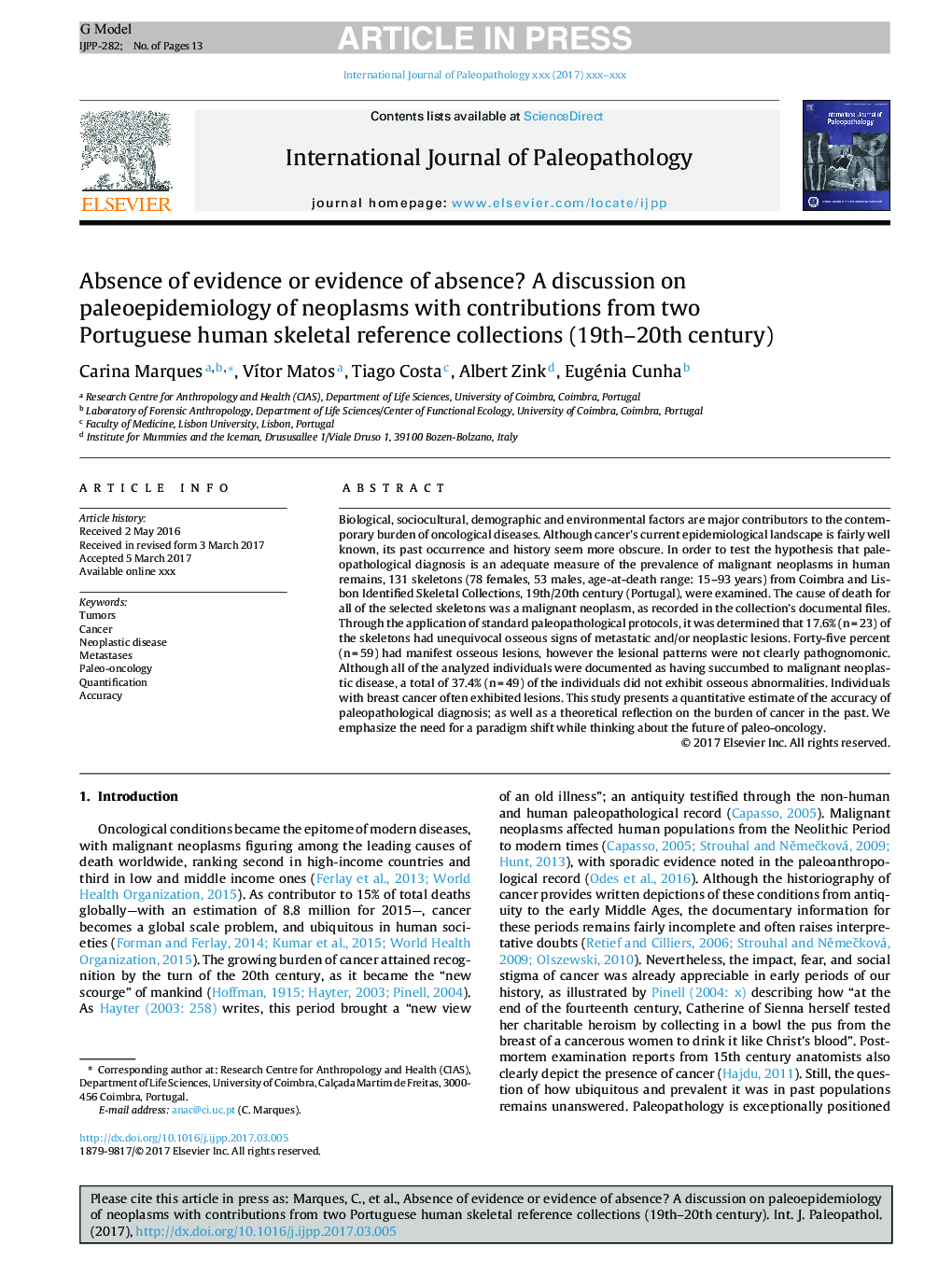| Article ID | Journal | Published Year | Pages | File Type |
|---|---|---|---|---|
| 6554764 | International Journal of Paleopathology | 2018 | 13 Pages |
Abstract
Biological, sociocultural, demographic and environmental factors are major contributors to the contemporary burden of oncological diseases. Although cancer's current epidemiological landscape is fairly well known, its past occurrence and history seem more obscure. In order to test the hypothesis that paleopathological diagnosis is an adequate measure of the prevalence of malignant neoplasms in human remains, 131 skeletons (78 females, 53 males, age-at-death range: 15-93 years) from Coimbra and Lisbon Identified Skeletal Collections, 19th/20th century (Portugal), were examined. The cause of death for all of the selected skeletons was a malignant neoplasm, as recorded in the collection's documental files. Through the application of standard paleopathological protocols, it was determined that 17.6% (nâ¯=â¯23) of the skeletons had unequivocal osseous signs of metastatic and/or neoplastic lesions. Forty-five percent (nâ¯=â¯59) had manifest osseous lesions, however the lesional patterns were not clearly pathognomonic. Although all of the analyzed individuals were documented as having succumbed to malignant neoplastic disease, a total of 37.4% (nâ¯=â¯49) of the individuals did not exhibit osseous abnormalities. Individuals with breast cancer often exhibited lesions. This study presents a quantitative estimate of the accuracy of paleopathological diagnosis; as well as a theoretical reflection on the burden of cancer in the past. We emphasize the need for a paradigm shift while thinking about the future of paleo-oncology.
Related Topics
Life Sciences
Biochemistry, Genetics and Molecular Biology
Physiology
Authors
Carina Marques, VÃtor Matos, Tiago Costa, Albert Zink, Eugénia Cunha,
